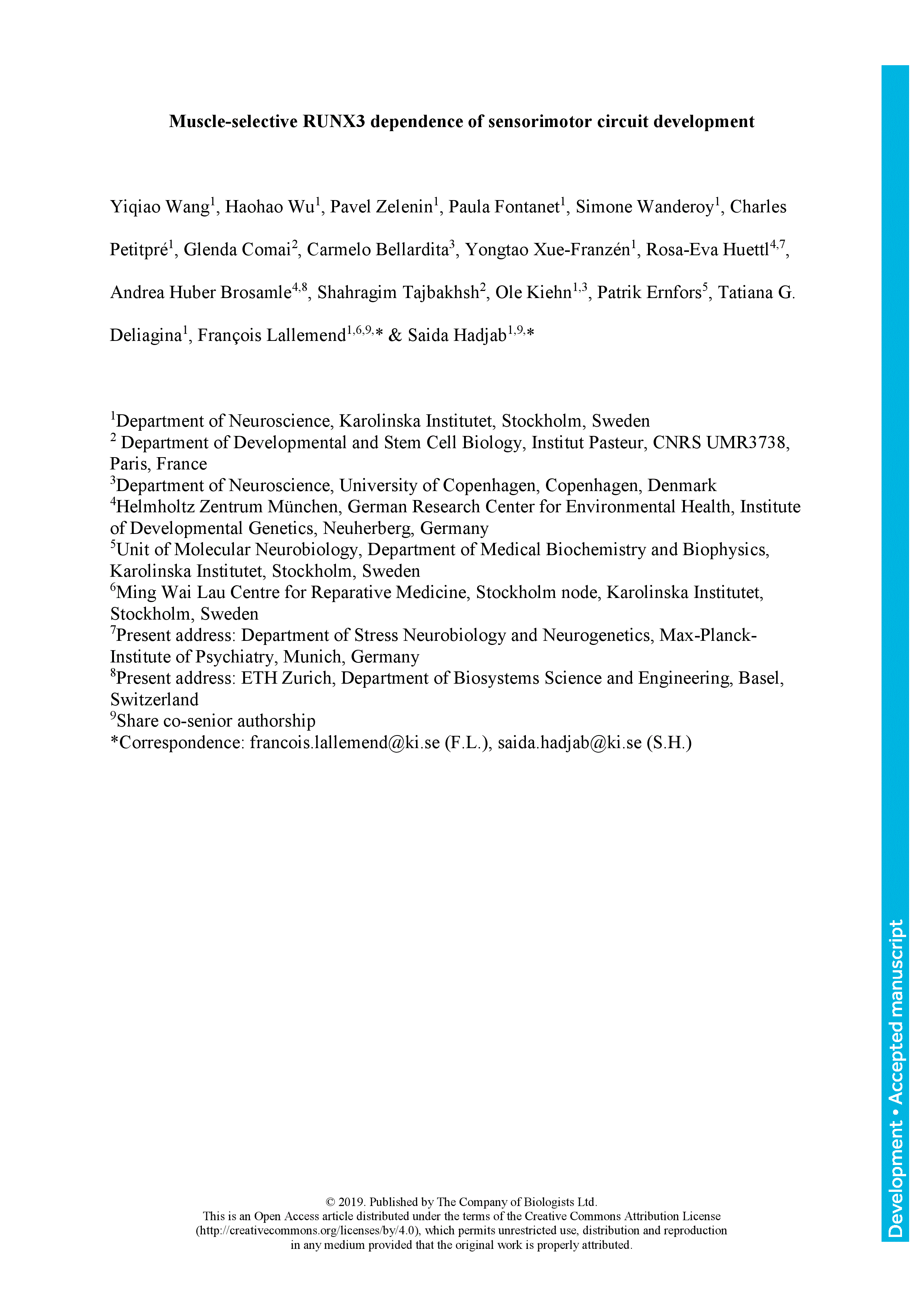The control of all our motor outputs requires constant monitoring by proprioceptive sensory neurons (PSNs) that convey continuous muscle sensory inputs to the spinal motor network. Yet, the molecular programs that control the establishment of this sensorimotor circuit remain largely unknown. The transcription factor RUNX3 is essential for the early steps of PSNs differentiation, making it difficult to study its role during later aspects of PSNs specification. Here, we conditionally inactivate Runx3 in PSNs after peripheral innervation and identify that RUNX3 is necessary for maintenance of cell identity of only a subgroup of PSNs, without discernable cell death. RUNX3 controls also the sensorimotor connection between PSNs and motor neurons at limb level, with muscle-by-muscle variable sensitivities to the loss of Runx3 that correlate with levels of RUNX3 in PSNs. Finally, we find that muscles and neurotrophin-3 signaling are necessary for maintenance of RUNX3 expression in PSNs. Hence, a transcriptional regulator critical for specifying a generic PSN type identity after neurogenesis, is later regulated by target muscle-derived signal to contribute to the specialized aspects of the sensorimotor connection selectivity.
Muscle-selective RUNX3 dependence of sensorimotor circuit development
Present address: Department of Stress Neurobiology and Neurogenetics, Max-Planck-Institute of Psychiatry, Munich, Germany
Present address: ETH Zurich, Department of Biosystems Science and Engineering, Basel, Switzerland
Share co-senior authorship
Currently Viewing Accepted Manuscript - Newer Version Available
Yiqiao Wang, Haohao Wu, Pavel Zelenin, Paula Fontanet, Simone Wanderoy, Charles Petitpré, Glenda Comai, Carmelo Bellardita, Yongtao Xue-Franzén, Rosa-Eva Huettl, Andrea Huber Brosamle, Shahragim Tajbakhsh, Ole Kiehn, Patrik Ernfors, Tatiana G. Deliagina, François Lallemend, Saida Hadjab; Muscle-selective RUNX3 dependence of sensorimotor circuit development. Development 2019; dev.181750. doi: https://doi.org/10.1242/dev.181750
Download citation file:
Advertisement
Call for papers: Uncovering Developmental Diversity

Development invites you to submit your latest research to our upcoming special issue: Uncovering Developmental Diversity. This issue will be coordinated by our academic Editor Cassandra Extavour (Harvard University, USA) alongside two Guest Editors: Liam Dolan (Gregor Mendel Institute of Molecular Plant Biology, Austria) and Karen Sears (University of California Los Angeles, USA).
Choose Development in 2024

In this Editorial, Development Editor-in-Chief James Briscoe and Executive Editor Katherine Brown explain how you support your community by publishing in Development and how the journal champions serious science, community connections and progressive publishing.
Journal Meeting: From Stem Cells to Human Development

Register now for the 2024 Development Journal Meeting From Stem Cells to Human Development. Early-bird registration deadline: 3 May. Abstract submission deadline: 21 June.
Pluripotency of a founding field: rebranding developmental biology

This collaborative Perspective, the result of a workshop held in 2023, proposes a set of community actions to increase the visibility of the developmental biology field. The authors make recommendations for new funding streams, frameworks for collaborations and mechanisms by which members of the community can promote themselves and their research.
Read & Publish Open Access publishing: what authors say

We have had great feedback from authors who have benefitted from our Read & Publish agreement with their institution and have been able to publish Open Access with us without paying an APC. Read what they had to say.



